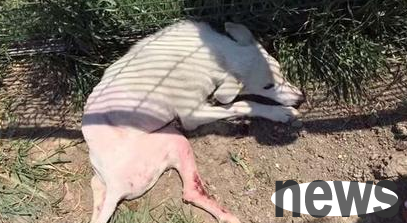What should I do if a dog has "canine infectious hepatitis"?
Canal infectious hepatitis is a type of hepatitis. It is an acute septic infectious disease caused by canine infectious hepatitis virus. It mainly infringes on puppies under 1 year old and often causes acute necrotic hepatitis. It is often mixed with canine distemper, making the condition more complicated and serious.

This disease occurs almost all over the world and is a common canine disease. Let’s learn more about the details of “canine infectious hepatitis”:
1. The causes of canine infectious hepatitis:
1. The virus at the beginning of the disease is mainly found in the blood of the sick dog. In the future, a large number of viruses will be found in various secretions and excretions, and will be excreted from the body, polluting the external environment. After recovering from the disease, you can also detoxify from the urine for 6-9 months. Therefore, sick dogs and poisonous dogs are the sources of infection of this disease.
2. Healthy dogs are mainly infected through the digestive tract and can also be transmitted through the placenta.
3. The virus has a very strong resistance and can survive for a long time under low temperature conditions. It is still pathogenic in the soil for 10 to 14 days, and can survive in the dog kennel for a long time. But heating can quickly kill the virus.
2. Key points of diagnosis of infectious hepatitis in dogs:
The prevalence of this disease is that dogs can occur regardless of breed, gender, or season, especially puppies under 1 year old and in winter. The relevant clinical characteristics are as follows:
1. The initial symptoms are very similar to canine distemper. The sick dog is depressed, has a loss of appetite, and has a significant increase in thirst, and even has two forelimbs immersed in water and drank wildly, which is a characteristic symptom of this disease. The body temperature of the sick dog is as high as 40 degrees Celsius and lasts for 4-6 days.
2. Vomiting and diarrhea are more common. If vomiting and feces contain blood, the prognosis is often poor. Most sick dogs have pain in the sword-shaped cartilage.
3. 7 to 10 days after the acute symptoms disappear, some dogs have turbid corneals, with white or even blue-white corneas. This is called hepatitis blue eyes and will disappear in a few days. There are bleeding spots in the gums. Although this disease is called hepatitis, jaundice rarely occurs. If there is no secondary infection, it will usually return to normal within a few days.
According to the above-mentioned epidemic characteristics and clinical symptoms, a preliminary diagnosis can be made. The final diagnosis depends on laboratory tests of the disease material.

3. Treatment and prevention of infectious hepatitis in dogs:
1. Isolate sick dogs as soon as possible and treat them with high-free serum or adult dog serum, once a day, 10~30 ml each time. In addition, 20-40 ml of 50% glucose solution should be injected intravenously, 250 mg of vitamin C or 15-20 mg of adenosine triphosphate once a day, and used continuously for 3-5 days. Oral liver taile tablets.
2. To regulate drinking water, you can feed 5% glucose saline once every 2-3 hours.
3. Preventive injection. Injection of the canine quintile attenuated vaccine (rabies, canine distemper, parainfluenza, infectious hepatitis, parvoviral enteritis) and the canine hepatitis and enteritis. Dogs aged 30 to 90 days will be vaccinated 3 times, and dogs aged 90 days will be vaccinated 2 times, with a interval of 2-4 weeks each time. Dosage per injection: 2 ml of pentagram and 1 ml of secondary pentagram, which can achieve a 1-year immunization period.
4. It is necessary to maintain good kennel hygiene and raise it by self-breding. It is strictly forbidden to keep it mixed with other dogs.



